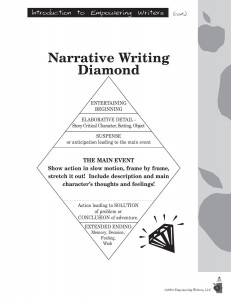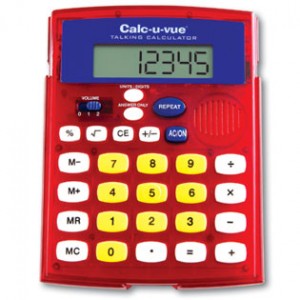Posted by kavery508 | Posted in Uncategorized | Posted on November 12, 2013
 Our CAFE focus this week comes from the “E” for Extending Vocabulary: Tune into interesting words when reading, speaking, and writing. This is a necessary part of learning to read. Writers write in a narrative style that differs from spoken speech, including words that make the writing interesting. Now is the perfect time for kids to pay attention to those new words they encounter in reading, especially when they don’t use them normally when speaking. It’s one more tool we can add to our treasure chest of strategies we use to figure out unknown words.
Our CAFE focus this week comes from the “E” for Extending Vocabulary: Tune into interesting words when reading, speaking, and writing. This is a necessary part of learning to read. Writers write in a narrative style that differs from spoken speech, including words that make the writing interesting. Now is the perfect time for kids to pay attention to those new words they encounter in reading, especially when they don’t use them normally when speaking. It’s one more tool we can add to our treasure chest of strategies we use to figure out unknown words.
 This week we introduce the Narrative Writing Diamond. It is a visual tool to help us remember how stories (both real accounts from life, and fiction) are structured. When kids write personal narrative of their life events, there is a tendency to start a story in the morning, tell about events during the day, and end with going to bed. This year we’ll work to develop a sense of telling about “one slice in time,” or telling about one event only, with detail. The story therefore should start near the event; the middle should relate the event with details so the reader understands; and the end should include thoughts or feelings about the event in a way that wraps things up and leaves the reader with thoughts or feelings of their own.
This week we introduce the Narrative Writing Diamond. It is a visual tool to help us remember how stories (both real accounts from life, and fiction) are structured. When kids write personal narrative of their life events, there is a tendency to start a story in the morning, tell about events during the day, and end with going to bed. This year we’ll work to develop a sense of telling about “one slice in time,” or telling about one event only, with detail. The story therefore should start near the event; the middle should relate the event with details so the reader understands; and the end should include thoughts or feelings about the event in a way that wraps things up and leaves the reader with thoughts or feelings of their own.
![]() Spelling homework begins next week. Students will come home Monday with 10 words: 5 representing the phonics focus for the week, and 5 sight words from our Nifty Fifty and beyond. For 5-10 minutes per night, M-Th, students should practice spelling and writing the words until they are learned. One strategy for learning them is to “make and break”: write the letters of a word on paper; read it; mix up the letters and remake the word a few times; write the whole word. I’ll post a new strategy here in each of the next few weeks! Quizzes will be on Fridays.
Spelling homework begins next week. Students will come home Monday with 10 words: 5 representing the phonics focus for the week, and 5 sight words from our Nifty Fifty and beyond. For 5-10 minutes per night, M-Th, students should practice spelling and writing the words until they are learned. One strategy for learning them is to “make and break”: write the letters of a word on paper; read it; mix up the letters and remake the word a few times; write the whole word. I’ll post a new strategy here in each of the next few weeks! Quizzes will be on Fridays.
![]()
 In math we will extend our use of finding and recording patterns in number. We will learn how to create functions using calculators to count/add/subtract by 1s, 2s, 5s, and 10s. Patterns are important to understanding numbers and computation. For example, if I add 12 + 30, I know my answer will fall in the 40-50 range, with a “2” in the ones place. Playing the games from Everyday Math can help: https://emgames.everydaymathonline.com/g_chooser.html?gradelevel=1&PHPSESSID=2972ba09fe68bbf6e4e8233ff7e907d4
In math we will extend our use of finding and recording patterns in number. We will learn how to create functions using calculators to count/add/subtract by 1s, 2s, 5s, and 10s. Patterns are important to understanding numbers and computation. For example, if I add 12 + 30, I know my answer will fall in the 40-50 range, with a “2” in the ones place. Playing the games from Everyday Math can help: https://emgames.everydaymathonline.com/g_chooser.html?gradelevel=1&PHPSESSID=2972ba09fe68bbf6e4e8233ff7e907d4
We will also learn about dimes and use them to add/count by 10s. Keep working your child’s number memory at red lights and during commercials: Count by 10s to ____. Stop. Count on by 5s…….Stop. Count on by ones…….Stop. Try showing the counts you do with dimes, nickels, and pennies. Our new favorite dimes video: https://www.youtube.com/watch?v=glGTuowt2Ko
If you haven’t yet, please send in some dimes for us to use in class. Real currency is exciting for kids, and there may be a tendency for them to want to take some home from our classroom. If you see “unexpected” change, consider sending that in as well!
![]() In science we will learn through exploration about another earth material: humus. We will combine it with the other materials we have examined and sorted (gravel, sand, silt, pebbles) to make soil. We will learn the importance and scale of soil, as it covers nearly all of earth’s land surface.
In science we will learn through exploration about another earth material: humus. We will combine it with the other materials we have examined and sorted (gravel, sand, silt, pebbles) to make soil. We will learn the importance and scale of soil, as it covers nearly all of earth’s land surface.
In social studies we will share stories from Veteran’s Day, and learn how people in our armed services served their country long ago and in present times.

